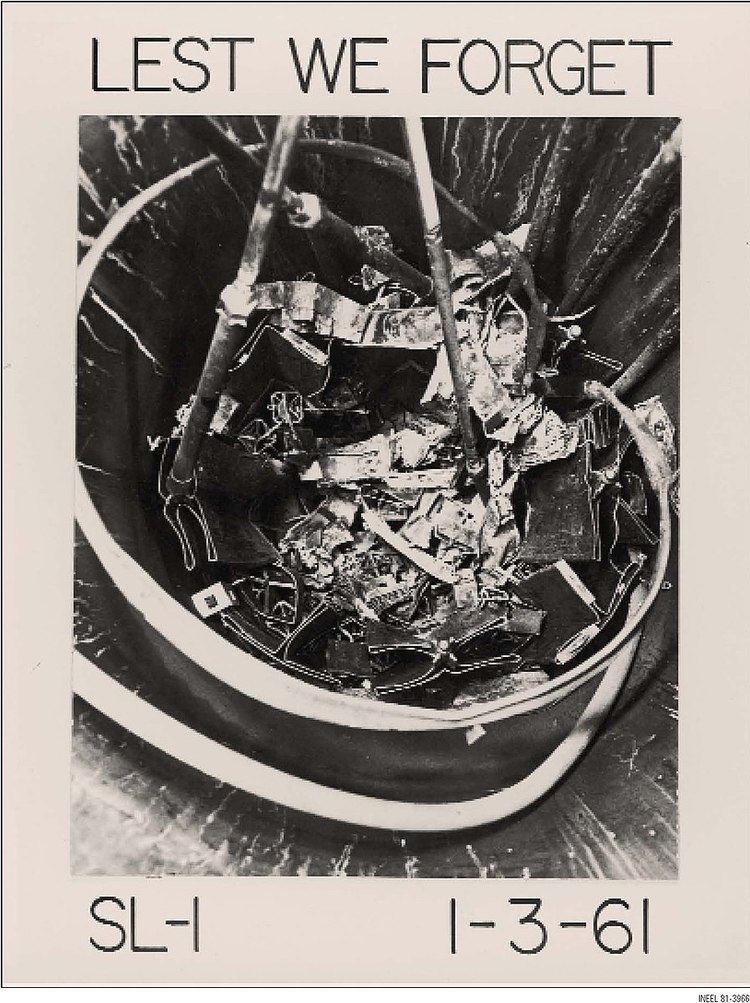 | ||
There have been more than 20 nuclear and radiation accidents involving fatalities. These involved nuclear power plant accidents, nuclear submarine accidents, radiotherapy accidents and other mishaps.
Contents
Chernobyl disaster
4,000 fatalities – Chernobyl disaster, Ukraine, April 26, 1986. 56 direct deaths (47 accident workers and nine children with thyroid cancer) and it is estimated that there may eventually be 4,000 extra cancer deaths among the approximately 600,000 most highly exposed people.
Estimates of the total number of deaths potentially resulting from the Chernobyl disaster vary enormously: Thirty one deaths are directly attributed to the accident, all among the reactor staff and emergency workers. A UNSCEAR report places the total confirmed deaths from radiation at 64 as of 2008. The World Health Organization (WHO) suggests it could reach 4,000 civilian deaths, a figure which does not include military clean-up worker casualties. A 2006 report predicted 30,000 to 60,000 cancer deaths as a result of Chernobyl fallout. A Greenpeace report puts this figure at 200,000 or more. A disputed Russian publication, Chernobyl, concludes that 985,000 premature cancer deaths occurred worldwide between 1986 and 2004 as a result of radioactive contamination from Chernobyl.
Kyshtym disaster
The Kyshtym disaster, which occurred at Mayak in the Soviet Union on 29 September 1957, was rated as a level 6 on the International Nuclear Event Scale, the third most severe incident after Chernobyl and Fukushima. Because of the intense secrecy surrounding Mayak, it is difficult to estimate the death toll of Kyshtym. One book claims that "in 1992, a study conducted by the Institute of Biophysics at the former Soviet Health Ministry in Chelyabinsk found that 8,015 people had died within the preceding 32 years as a result of the accident." By contrast, only 6,000 death certificates have been found for residents of the Tech riverside between 1950 and 1982 from all causes of death, though perhaps the Soviet study considered a larger geographic area affected by the airborne plume. The most commonly quoted estimate is 200 deaths due to cancer, but the origin of this number is not clear. More recent epidemiological studies suggest that around 49 to 55 cancer deaths among riverside residents can be associated to radiation exposure. This would include the effects of all radioactive releases into the river, 98% of which happened long before the 1957 accident, but it would not include the effects of the airborne plume that was carried north-east. The area closest to the accident produced 66 diagnosed cases of chronic radiation syndrome, providing the bulk of the data about this condition.
Windscale fire
33+ cancer fatalities (estimated by UK government) – Windscale, United Kingdom, October 8, 1957. The Windscale fire resulted when uranium metal fuel ignited inside plutonium production piles; surrounding dairy farms were contaminated.
Fukushima disaster
The Fukushima Daiichi nuclear disaster has no confirmed casualties from radiation exposure, though six workers died due to various reasons, including cardiovascular disease, during the containment efforts or work to stabilize the Earthquake and Tsunami damage to the site.
The United Nations Scientific Committee on the Effects of Atomic Radiation (UNSCEAR), released a report on the Fukushima accident April 2, 2014. It stated that the scientists have found no evidence to support the idea that the nuclear meltdown in Japan in 2011 will lead to an increase in cancer rates or birth defects.
None of the workers at the plant have died from acute radiation poisoning.
In contrast, an opinion piece in the Wall Street Journal cites a 2013 Japanese study, which concluded that mortality due to "evacuation stress" from the area around Fukoshima had reached more than 1600. This includes deaths from suicide and lack of access to critical health care, but not from radiation, increased cancer, or any other direct result of the nuclear accident. The author also states these deaths occurred among people who had been evacuated from areas where the radiation posed little or no risk to their health, areas where they would experience less exposure than the normal amount received by residents in Finland.
